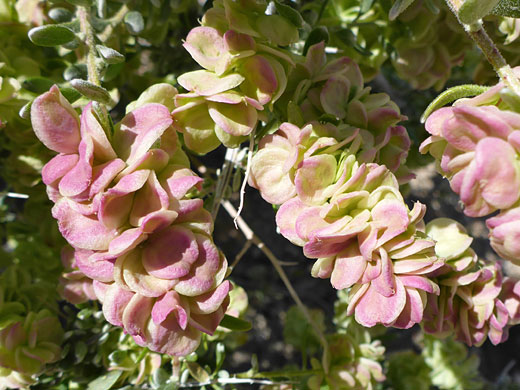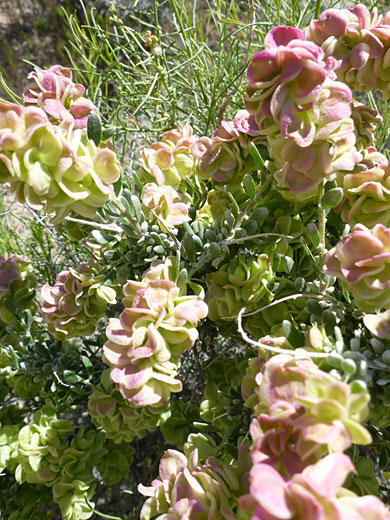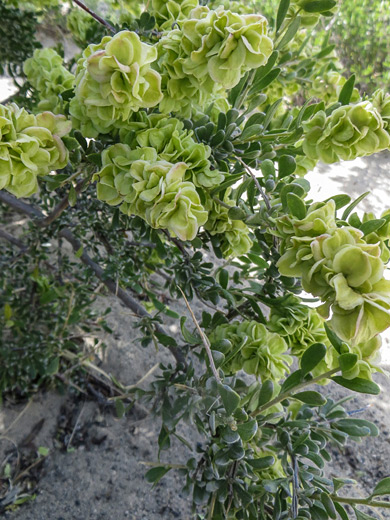
Green leaves and purplish bracts; grayia spinosa, Flat Top Butte, Sand to Snow National Monument, California
Common name:
Spiny hopsage
Family:
Scientific name:
Grayia spinosa
Synonym:
Atriplex grayi
Main flower color:
Range:
All states west of the Rocky Mountains
Height:
Up to 4 feet
Habitat:
Pinyon-juniper woodland, semi-deserts, scrubland; from near sea level to 8,000 feet
Leaves:
Alternate, oblanceolate to oval, up to 1 inch long
Season:
March to June
The most colorful part of grayia spinosa are the seed pods, initially yellow-green but maturing to a deep reddish pink. Pods have two wings, fused along the axis to form a round, flat disc, with the fruit at the center. The edges of the pods are entire. Individual plants produce either staminate or pistillate flowers, in both cases forming spike-like clusters subtended by leafy bracts; the former are formed of a four-lobed calyx enclosing four or five stamens, similar in length to the calyx lobes, while the latter have an exserted, two lobed stigma within a cup-shaped structure of two fused bracts.
Plants are shrubs, with branched, brown stems, which become whitish and woody with age. Leaves and younger stems have a light covering of short, branched, scaly hairs. Branch tips are spiny, especially when old. Leaves taper at the base to a short petiole. Leaf tips are lighter in color than the rest of the blade.
Plants are shrubs, with branched, brown stems, which become whitish and woody with age. Leaves and younger stems have a light covering of short, branched, scaly hairs. Branch tips are spiny, especially when old. Leaves taper at the base to a short petiole. Leaf tips are lighter in color than the rest of the blade.
All Contents © Copyright The American Southwest | Comments and Questions | Contribute | Site Map



